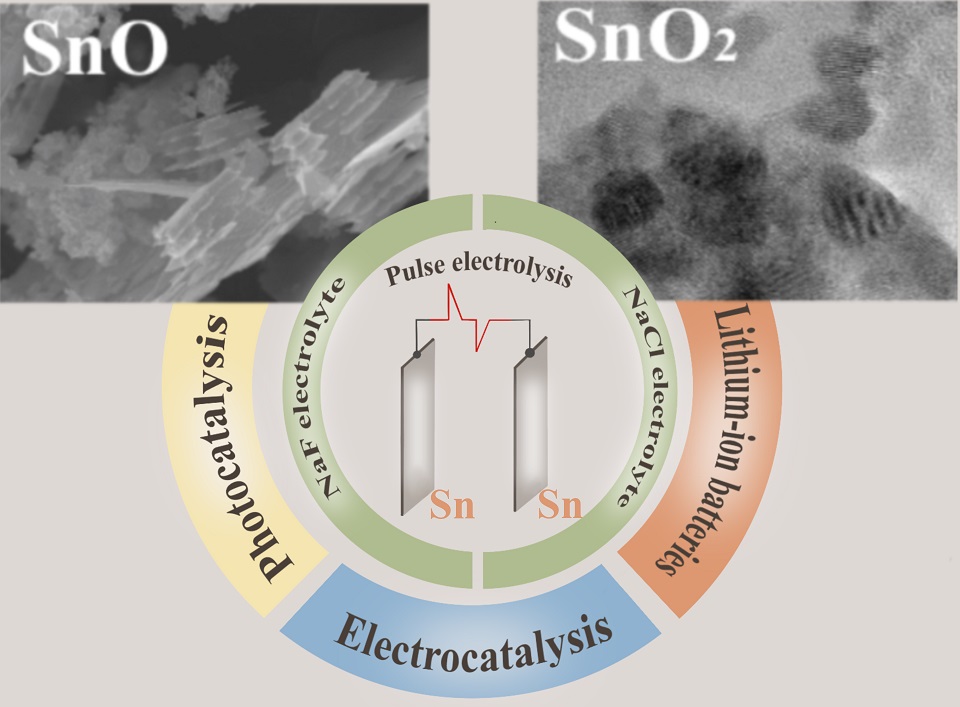

调控锡氧化物基材料功能特性的新见解
New Insights into Controlling the Functional Properties of Tin Oxide-Based Materials
Received date: 2024-08-26
Revised date: 2024-10-14
Accepted date: 2024-11-12
Online published: 2024-11-14
开发纳米结构材料微观特性和组成可控的制备方法,是发展具有明确功能特性材料制备技术的重要基础。脉冲电解法,一种自上而下的电化学方法,已被证明是制备纳米结构材料的可行方法,对合成锡氧化物基材料尤其有效。这种方法通过改变水性电解质的阴离子成分,可以有效地控制锡氧化物颗粒产物的组成和形状,从而避免在合成过程中使用额外的封端剂,并省去高温后处理步骤。本文结果表明,脉冲电解法得到的锡氧化物的组成和微观结构特性取决于氟化锡和氯化锡络合物不同的稳定性,以及氯化阴离子和氟化阴离子与锡氧化物表面不同的相互作用机制,并受到这些卤素阴离子不同的各向同性/各向混杂性的影响。该方法所获得的分散性锡氧化物的组成和微观结构特征决定了它们作为锂离子电池负极材料、光催化剂或铂基电催化剂混合载体亲氧组分的潜在应用。

Alexandra Kuriganova , Nina Smirnova . 调控锡氧化物基材料功能特性的新见解[J]. 电化学, 2025 , 31(1) : 2408261 . DOI: 10.61558/2993-074X.3509
Development of methodologies for fabrications of nanostructured materials that provide control over their microstructural features and compositions represents a fundamental step in the advancement of technologies for productions of materials with well-defined functional properties. Pulse electrolysis, a top-down electrochemical approach, has been demonstrated to be a viable method for producing nanostructured materials with a particular efficacy in the synthesis of tin oxides. This method allows for significant control over the composition and shape of the resulting tin oxides particles by modifying the anionic composition of the aqueous electrolyte, obviating the need for additional capping agents in the synthesis process and eliminating the requirement for high-temperature post-treatments. The composition and microstructural characteristics of these oxides are found to be contingent upon the differing stabilities of tin fluoride and chloride complexes, as well as the distinct mechanisms of interaction between chloride and fluoride anions with an oxidized tin surface, which is influenced by the varying kosmotropic/chaotropic nature of these anions. The composition and microstructural characteristics of the obtained dispersed tin oxides would thus determine their potential applications as an anode material for lithium-ion batteries, as a photocatalyst, or as an oxyphilic component of a hybrid support for a platinum-containing electrocatalyst.

Key words: tin oxide; pulse electrolysis; lithium-ion battery; photocatalysis; fuel cell
/
| 〈 |
|
〉 |